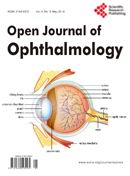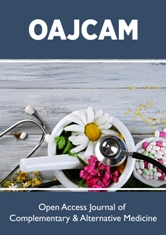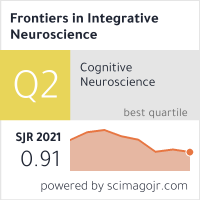Eye Diseases
How to submit an article:
- Registered users can submit any published journal article that has a unique DOI (Digital Object Identifier) name or link to Research Hub.
- For example, you can paste the full DOI link:
https://doi.org/10.1109/5.771073or just the DOI name:10.1109/5.771073into the field above and click submit. - The person who is first to submit a valid article to Research Hub will forever be credited for it, and every article submission earns you +6 Research Points.
Published research studies are articles that present the findings of original research that has undergone a peer-review process and has been made publicly available in scholarly journals, books or other media.

Lutein and Zeaxanthin and Their Roles in Age-Related Macular Degeneration—Neurodegenerative Disease
2022 Feb 16 Nutrients Mrowicka M, Mrowicki J, Kucharska E, Majsterek I
Lutein and zeaxanthin, obtained from sources like dark leafy vegetables and fruits, play a crucial role in defending against oxidative stress and scavenging free radicals. These carotenoids, concentrated in the macula of the retina, are essential for eye health. Specific binding proteins, StARD3 for lutein and GSTP1 for zeaxanthin, facilitate their accumulation in the retina. Supportive therapy with lutein and zeaxanthin has been shown to delay the progression of eye diseases, such as age-related macular degeneration (AMD) and cataracts. The article provides insights into the metabolism and bioavailability of these carotenoids, emphasizing the importance of consuming xanthophyll-rich foods.
Review Article Age-Related Macular Degeneration Zeaxanthin
Acupuncture Therapy for the Treatment of Optic Nerve Atrophy
2022 Jan Open Journal of Ophthalmology Karnwhine JC, Yu Y, Li C
Acupuncture significantly improves visual acuity, visual field, and visual function in patients with ONA, showing greater effectiveness than other treatments, especially when combined with medication.
Systematic Review Review Article Acupuncture Optic Nerve Atrophy Eye Diseases
Early Increase in Retinal Arterial and Venous Blood Flow Velocities on Color Doppler Ultrasound after Acupuncture
2021 Apr 27 Ultraschall in der Medizin - European Journal of Ultrasound Venturini M, Piacentino F, Coppola A, Recaldini C, Pacetti S, Fontana F, et al.
Acupuncture significantly increases blood flow velocities in the central retinal artery and vein in patients with ophthalmic diseases, indicating a potential beneficial effect on retinal microcirculation.
Experimental Study Clinical Study Eye Diseases
The Use of Acupuncture in Eye Diseases: An Overview
2020 Sep 11 Open Access Journal of Complementary & Alternative Medicine Liang X
Acupuncture has been used for thousands of years in treating eye diseases, with recent studies and case reports indicating some effectiveness in improving conditions such as glaucoma, optic atrophy, retinitis pigmentosa, and amblyopia.
Review Article Acupuncture Eye Diseases
Effects of Retinal Transcription Regulation After GB20 Needling Treatment in Retina With Optic Neuritis
2020 Sep 29 Frontiers in Integrative Neuroscience Chen J, Zhang L, Gan X, Zhang R, He Y, Lv Q, et al.
Experimental Study Animal Study Acupuncture Eye DiseasesNeedling at the GB20 acupoint in Traditional Chinese Medicine can reverse the expression of certain genes related to axon development and regeneration in optic neuritis.
Research insights are moderated by the Research Hub team and offer an at-a-glance overview of interesting research findings.

2020 Frontiers in Integrative Neuroscience
Needling at the GB20 acupoint in Traditional Chinese Medicine can reverse the expression of certain genes related to axon development and regeneration in optic neuritis.
Experimental Study Acupuncture
Effects of Retinal Transcription Regulation After GB20 Needling Treatment in Retina With Optic Neuritis
Chen J, Zhang L, Gan X, Zhang R, He Y, Lv Q, et al.
Review Articles
Review articles summarise and critically evaluate the current state of research on a specific topic or field by synthesising multiple primary research studies.

Lutein and Zeaxanthin and Their Roles in Age-Related Macular Degeneration—Neurodegenerative Disease
2022 Feb 16 Nutrients Mrowicka M, Mrowicki J, Kucharska E, Majsterek I
Lutein and zeaxanthin, obtained from sources like dark leafy vegetables and fruits, play a crucial role in defending against oxidative stress and scavenging free radicals. These carotenoids, concentrated in the macula of the retina, are essential for eye health. Specific binding proteins, StARD3 for lutein and GSTP1 for zeaxanthin, facilitate their accumulation in the retina. Supportive therapy with lutein and zeaxanthin has been shown to delay the progression of eye diseases, such as age-related macular degeneration (AMD) and cataracts. The article provides insights into the metabolism and bioavailability of these carotenoids, emphasizing the importance of consuming xanthophyll-rich foods.
Review Article Age-Related Macular Degeneration Zeaxanthin
Acupuncture Therapy for the Treatment of Optic Nerve Atrophy
2022 Jan Open Journal of Ophthalmology Karnwhine JC, Yu Y, Li C
Acupuncture significantly improves visual acuity, visual field, and visual function in patients with ONA, showing greater effectiveness than other treatments, especially when combined with medication.
Systematic Review Review Article Acupuncture Optic Nerve Atrophy Eye Diseases
The Use of Acupuncture in Eye Diseases: An Overview
2020 Sep 11 Open Access Journal of Complementary & Alternative Medicine Liang X
Acupuncture has been used for thousands of years in treating eye diseases, with recent studies and case reports indicating some effectiveness in improving conditions such as glaucoma, optic atrophy, retinitis pigmentosa, and amblyopia.
Review Article Acupuncture Eye DiseasesClinical Trials
Clinical trials are research studies that involve people and are conducted to evaluate the safety and efficacy of new treatments or interventions, such as drugs, medical devices, or behavioural therapies.
Study Protocols
Published study protocols are detailed plans that outline the objectives, methodology, statistical analyses, and organisation of a research study that have been made publicly available for others to review and use as a reference.
Presentation Slides

Experimental Study
Needling at the GB20 acupoint in Traditional Chinese Medicine can reverse the expression of certain genes related to axon development and regeneration in optic neuritis.
Chen J, Zhang L, Gan X, Zhang R, He Y, Lv Q, Fu H, Liu X, Miao L
Executive Summary
Write an executive summary in the form of a blog article on the topic of "Research into Chinese medicine treatment for Eye Diseases" summarising the research below and using language that can be easily understood by patients and avoiding medical jargon using a professional and caring tone of voice.
Write an executive summary in the form of a blog article on the topic of "Researched Chinese medicine treatments for Eye Diseases" summarising the research below in an objective and easy to understand way, and using language that can be easily understood by patients. Group the article into Chinese medicine treatments first, followed by nutrition and other treatments. Avoid using medical jargon and use a professional and caring tone of voice.
Write me a concise but easy to understand executive summary on the topic of "Chinese medicine treatments for Eye Diseases" based on the following research that I will give you. Your summary should be 2 paragraphs long in Australian English spelling and include references to the studies.
A Experimental Study published in 2020 in the journal Frontiers in Integrative Neuroscience found that Needling at the GB20 acupoint in Traditional Chinese Medicine can reverse the expression of certain genes related to axon development and regeneration in optic neuritis. To explore the molecular mechanisms of GB20 acupoint needling treatment on Optic Neuritis, a common symptom of Multiple Sclerosis, an Experimental Autoimmune Encephalomyelitis (EAE) mouse model with EAE-associated optic neuritis was utilized. Traditional Chinese Medicine practices of needling at the GB20 acupoint and GV16 acupoint control treatment were applied, followed by RNA sequencing of the retinal transcriptome to identify differentially expressed genes. In the discussion of the results, it was found that of the genes affected by optic neuritis, needling at the GB20 acupoint reversed the expression of 21 genes, including Nr4a3, Sncg, Uchl1, and Tppp3. These genes are particularly involved in axon development and regeneration, suggesting a beneficial effect from GB20 acupoint needling. Moreover, it was discovered that GB20 needling also influenced the circadian rhythm in the mouse retina with optic neuritis. The GV16 was also identified to be an effective control site for GB20 treatment in animal studies.
Moderation Tools
Topic
Sign In
Users not signed in are limited to viewing the 5 most recent items of content.